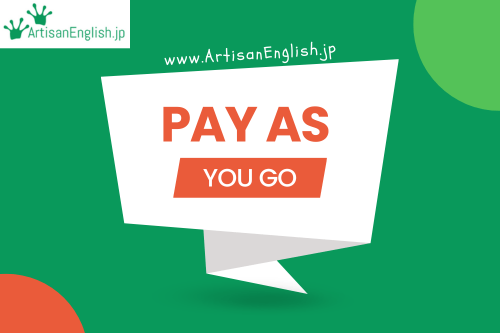
YouTube / iTunes / Spotify / Radio Public / Pocket Casts / Google Podcasts / Breaker / Overcast
Listen to ArtisanEnglish.jp posts & lesson intros here.
WotD: Pay as you go
Pay-as-you-go is a popular payment system that allows customers to pay for services as they use them.
It is commonly used for mobile phone services, electricity, and natural gas.
With pay-as-you-go, users top up their accounts with credits deducted from the account as they use the service.
This system is prevalent among people who cannot get credit, such as those with poor credit scores, low-income earners, and international students.
In Britain and America, many households have been forced to use pay-as-you-go electricity meters.
These meters enable families to monitor and manage their electricity usage and only pay for what they consume.
This is a way for households to reduce their energy bills and prevent them from getting into debt.
Similarly, many international students and backpackers in the UK and other countries use pay-as-you-go smartphone services.
These services allow them to stay connected with their loved ones and access the internet without needing a contract or credit history.
This is particularly important for students on a budget and who cannot afford to pay expensive monthly phone bills.
While pay-as-you-go systems benefit many people, they also have some drawbacks.
For instance, they tend to be more expensive than traditional contracts, as users pay for the convenience of being able to top up their accounts when needed.
Additionally, some pay-as-you-go services have hidden charges that users may not be aware of, which can quickly add up and make the service more expensive than anticipated.
Ironically, the people who can least afford to pay higher charges and fees are the ones who are forced to do so with the pay-as-you-go system.
Flesch-Kincaid Readability Test
This post is understandable by someone with at least a 10th-grade education (age 16).
On the Flesch-Kincaid reading-ease test, this post scores 49.
The easier a passage is to read, the higher the score on a scale of 0 – 100.

